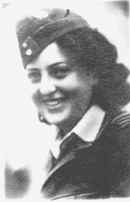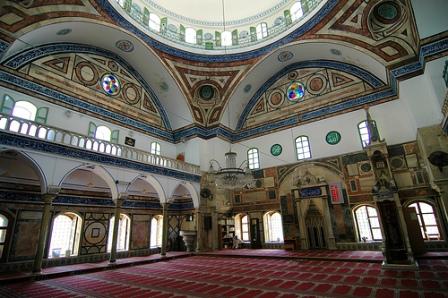We concluded Tisha b’Av at the International Synagogue in Tel Aviv. They were having a special showing of a film on Hannah Sennesh, one of the heros of the Zionist movement.  She had left Hungary to join a kibbutz before the outbreak of World War II. On the eve the Nazi occupation of Hungary, Hannah volunteered with other Israelis on a daring mission to Hungary, parachuting behind enemy lines. Her goal, to provide Allies intelligence of German troop movements and then get her mother and the Jewish community in Budapest to emigrate to Israel while there was still time. Hannah was captured and tortured. During her time on the Kibbutz she kept a journal, including haunting poetry. She was captured by the S.S. and imprisoned and tortured. From jail she continued to write poetry and to smuggle out useful information. She was hung as a spy on the eve of “liberation” of Hungary by the Russians. Her journals and writings published posthumously by her mother, as well as her bravery, made her a national hero. The movie, Blessed in the Match: The Life and Death of Hannah Senesh (click here) in English, captures the spirit of the times. After the movie, we celebrated Mincha in the International Synagogue and the family broke its fast at a kosher cafe across the street with other temple members. And being Tel Aviv, we took a late night stroll on the beach.
She had left Hungary to join a kibbutz before the outbreak of World War II. On the eve the Nazi occupation of Hungary, Hannah volunteered with other Israelis on a daring mission to Hungary, parachuting behind enemy lines. Her goal, to provide Allies intelligence of German troop movements and then get her mother and the Jewish community in Budapest to emigrate to Israel while there was still time. Hannah was captured and tortured. During her time on the Kibbutz she kept a journal, including haunting poetry. She was captured by the S.S. and imprisoned and tortured. From jail she continued to write poetry and to smuggle out useful information. She was hung as a spy on the eve of “liberation” of Hungary by the Russians. Her journals and writings published posthumously by her mother, as well as her bravery, made her a national hero. The movie, Blessed in the Match: The Life and Death of Hannah Senesh (click here) in English, captures the spirit of the times. After the movie, we celebrated Mincha in the International Synagogue and the family broke its fast at a kosher cafe across the street with other temple members. And being Tel Aviv, we took a late night stroll on the beach.
The next morning we left for Haifa. Our primary goal was the B’hai Gardens. We cruised up the highway seeing the modern new cities on the Sea and the hill towns. And then Mt Carmel arose in the distance, a city on a hill sweeping from the Mediterranean Sea deep into the east, bisecting the land of Israel. Over history, this was the major invasion route into Palestine. Here many battles were fought. Here was where the pilgrims landed en route to the holy land. Here, actually a few miles up the road in Acre was where the British had their notorious underground prison where they held members of the Irgun and Palmach.
morning we left for Haifa. Our primary goal was the B’hai Gardens. We cruised up the highway seeing the modern new cities on the Sea and the hill towns. And then Mt Carmel arose in the distance, a city on a hill sweeping from the Mediterranean Sea deep into the east, bisecting the land of Israel. Over history, this was the major invasion route into Palestine. Here many battles were fought. Here was where the pilgrims landed en route to the holy land. Here, actually a few miles up the road in Acre was where the British had their notorious underground prison where they held members of the Irgun and Palmach.
We searched for the cave of Elisha the Prophet. Despite signs, the garden was locked. We later learned that access was only through the Carmelite Convent. We visited the Nautical Museum with an amazing collection of Canaanite figurines. And then we drove up to the top of the B’hai Gardens. Even though they were closed we were able to enter a few levels and could appreciate its beauty. We wandered a bit, but nothing excited our interest. I suggested Acre, variously called Akko, Akre etc). Unfortunately it was rush hour, so the 15 minute drive took 1/2 an hour and the museums of Acre were closed or closing when we arrived.
Nevertheless, we walked the walls of the Crusader City, along ramparts rebuilt by the Ottomans. Compared to the condition of the Old City in Jerusalem, this area was deserted and run down. Acre is an old city, and an Arab city. It’s architecture predates the arrive of the Zionists and the British. There are no broad boulevards. The main streets turn and narrow with dark covered alley ways. At first we followed the walls, and then entered the crusader citadel. We passed the British prison and turned at the water. On one side, a long concrete promenade and crude modern concrete dwellings. On the other side, the moat and ramparts of the city. We walked along the waterfront and harbor. And then we took the Templar’s Tunnel. It led under the city from the waterfront back to citadel. And then we turned a corner looking for the Turkish bathhouse. While usually very good with directions, we quickly got lost in a warren of dark streets. We followed the sunlight looking for the waterfront. Every street seemed to turn back. We saw bareboned shops lined will sullen faces eying us suspiciously.
We found a plaza with dark-skinned kids playing. The were playing with guns. The guns looked real; but they were cap guns, the loudest cap guns I ever heard. My son said he saw one kid put a gun in his mouth and fire. We moved faster, but with no success getting out of the warren. One understanding resident pointed the way out. The light grew brighter, but we could still not see the harbor. This was a walled city with walls on every side. And finally we saw a car and followed it out. We emerged on a square with a beautiful mosque. We found out the mosque was the Jezzar Pasha mosque, the second largest mosque in Israel. Two men gestured to us to enter. The place was empty, but better a friendly face than several sullen faces or kids with guns. We entered. A young man volunteered to be our tour guide and we were able to enter the actual mosque and learn about its history and current use. And so our trip to the mosque of Jezzar Pasha (“the Butcher”) ended us on an upnote. We left the Arab quarter and returned to modern Israel. En route back to Tel Aviv we stopped at a shopping mall and ate at Burgos Burger Bar (BBB) on a patio in the cool Mediteranean sea breezes.
